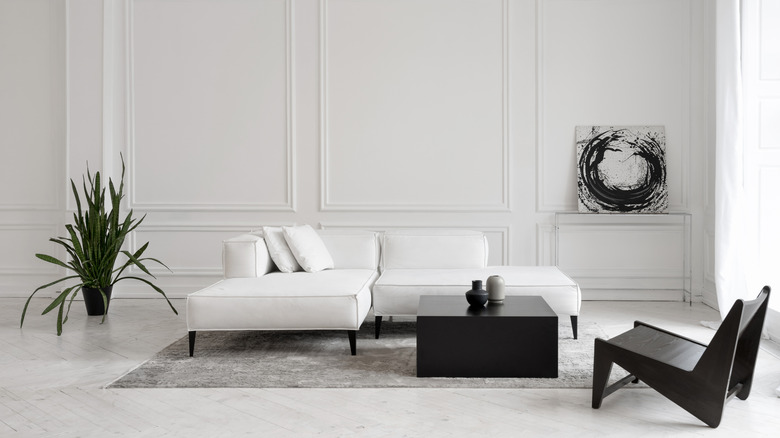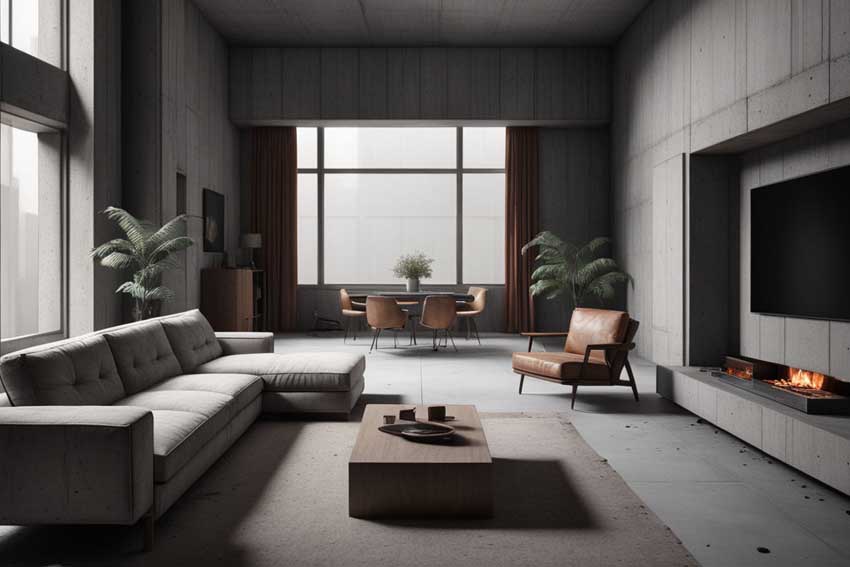Transform Your Wardrobe and State Of Mind with the Principles of Minimalism
Transform Your Wardrobe and State Of Mind with the Principles of Minimalism
Blog Article
Minimalism in Practice: Reliable Methods for Developing a Balanced and Intentional Home Environment
The practice of minimalism uses an organized technique to cultivating a home environment that mirrors intentionality and balance. Incorporating multi-functional furnishings and consistently reflecting on personal belongings contributes to a space that reverberates with personal worths.
Recognizing Minimalism
Minimalism, commonly misinterpreted as simple simplicity or an absence of properties, incorporates a profound philosophy that encourages individuals to curtail their lives to what really matters. At its core, minimalism has to do with deliberate living, cultivating a much deeper link with oneself and the surrounding setting. This way of life supporters for the elimination of excess, allowing people to focus on important worths, experiences, and partnerships.
The minimalist approach prolongs past physical belongings; it urges individuals to analyze their commitments, routines, and mental mess. By focusing on high quality over amount, minimalists seek to develop spaceâEUR" both actually and metaphoricallyâEUR" wherefore truly enriches their lives. This viewpoint promotes mindfulness, prompting individuals to take part in thoughtful decision-making concerning their time, sources, and energy.
Comprehending minimalism calls for a recognition of its transformative possibility. It is not merely a trend however a purposeful selection to embrace simplicity and clarity. With this lens, individuals can grow an extra purposeful presence, leading to enhanced wellness and satisfaction. Eventually, minimalism works as a path to better fulfillment, encouraging individuals to straighten their lives with their core worths and desires.
Decluttering Your Space
To grow a serene and well organized living room, it is necessary to involve in a complete decluttering procedure. Begin by evaluating each room methodically, recognizing items that no longer offer a purpose in your life or align with your worths.
Tackle one location at a time to avoid feeling overwhelmed. Beginning with smaller areas, such as a cabinet or a corner of a room, and slowly progress to bigger locations. As you sort with valuables, classify products right into three teams: keep, contribute, and throw out. This method not just simplifies decision-making however also enhances the decluttering process. Minimalism.
As soon as finished, consider carrying out a "one in, one out" guideline to avoid future buildup. By developing a conscious strategy to your possessions, you create an even more willful living area that promotes clearness and improves your overall quality of life.
Curating Your Items
Curating your belongings entails a thoughtful and intentional approach to what you choose to keep in your life. This procedure begins by examining each item based on its energy, sentimental value, and aesthetic charm. By asking critical questionsâEUR" such as whether an item offers an objective or brings you joyâEUR" you can make enlightened choices about what really is worthy of an area in your house.
To efficiently curate your possessions, consider developing groups. Group products by function, belief, or frequency of usage, which can help clarify their duties in your every day life. This approach not only streamlines the option process yet likewise cultivates a deeper appreciation for the items you select to keep.
Once you have identified your most valued items, concentrate on displaying them in a manner that enhances their relevance. Thoughtful arrangement can transform day-to-day objects right into meaningful centerpieces, adding to a intentional and peaceful setting.
Ultimately, the goal of curating your possessions is to grow a space that shows your worths and lifestyle. By prioritizing high quality over amount, you create a harmonious environment that advertises mindfulness and well-being in your home.
Creating for Functionality
Designing for capability requires a keen understanding of just how room and things communicate within your home. Each product needs to offer a purpose, boosting not only the aesthetic top quality of the setting however likewise its functionality. Begin by evaluating the main features of each space. The kitchen ought to assist in cooking you can try these out and meal preparation, while the living area should promote leisure and social communication.

Consider the flow of motion within each location, permitting natural shifts in between areas. This can be attained through open layouts or purposefully positioned furniture that encourages flow.
Making use of vertical area can also improve performance; mount racks or wall-mounted storage to keep floorings clear. Stress the significance of illumination, as it can substantially impact exactly how functional a space really feels. By focusing on energy and simpleness, you can produce a harmonious living environment that supports both day-to-day activities and personal health.
Keeping a Minimalist Lifestyle
Creating a functional space is just the initial step towards accepting a minimal way of living; the challenge lies in keeping that simplicity over time. To maintain a minimalist strategy, normal evaluation of personal belongings is necessary. This includes a periodic testimonial of products to determine their need and utility. Adopting the "one in, one out" regulation can properly avoid accumulation; for every brand-new product presented, an existing one need to be eliminated.
One more crucial element is mindfulness in intake. Being intentional regarding acquisitions helps prevent impulse acquires that can clutter both physical and psychological room. When shopping, take into consideration whether an item includes authentic worth to your life or aligns with your minimalist click here for info goals.

Lastly, develop a helpful environment by surrounding on your own with like-minded individuals that value minimalism (Minimalism). Taking part in conversations or taking part in minimalist areas can give motivation and liability, making certain that simpleness continues to be a core concept in your every day life
Verdict
To conclude, the practice of minimalism promotes a well balanced and intentional home environment with organized decluttering, thoughtful curation of belongings, and the prioritization of functionality in layout. By taking on techniques such as the "one in, one out" regulation and engaging with supportive neighborhoods, people can maintain a minimal lifestyle. This method not only lowers excess but likewise boosts mindfulness, ultimately adding to an extra deliberate and meaningful living experience.
Incorporating multi-functional furniture and regularly reassessing belongings adds to a space that resonates with individual values. By developing a mindful approach to your possessions, you create a more intentional living space that promotes quality and boosts your overall quality of life.Designing for performance requires a keen understanding of how area and things interact within hop over to these guys your home.Creating a functional space is just the initial step toward embracing a minimalist way of life; the challenge lies in preserving that simpleness over time. Being intentional concerning acquisitions assists prevent impulse acquires that can mess both physical and psychological space.
Report this page